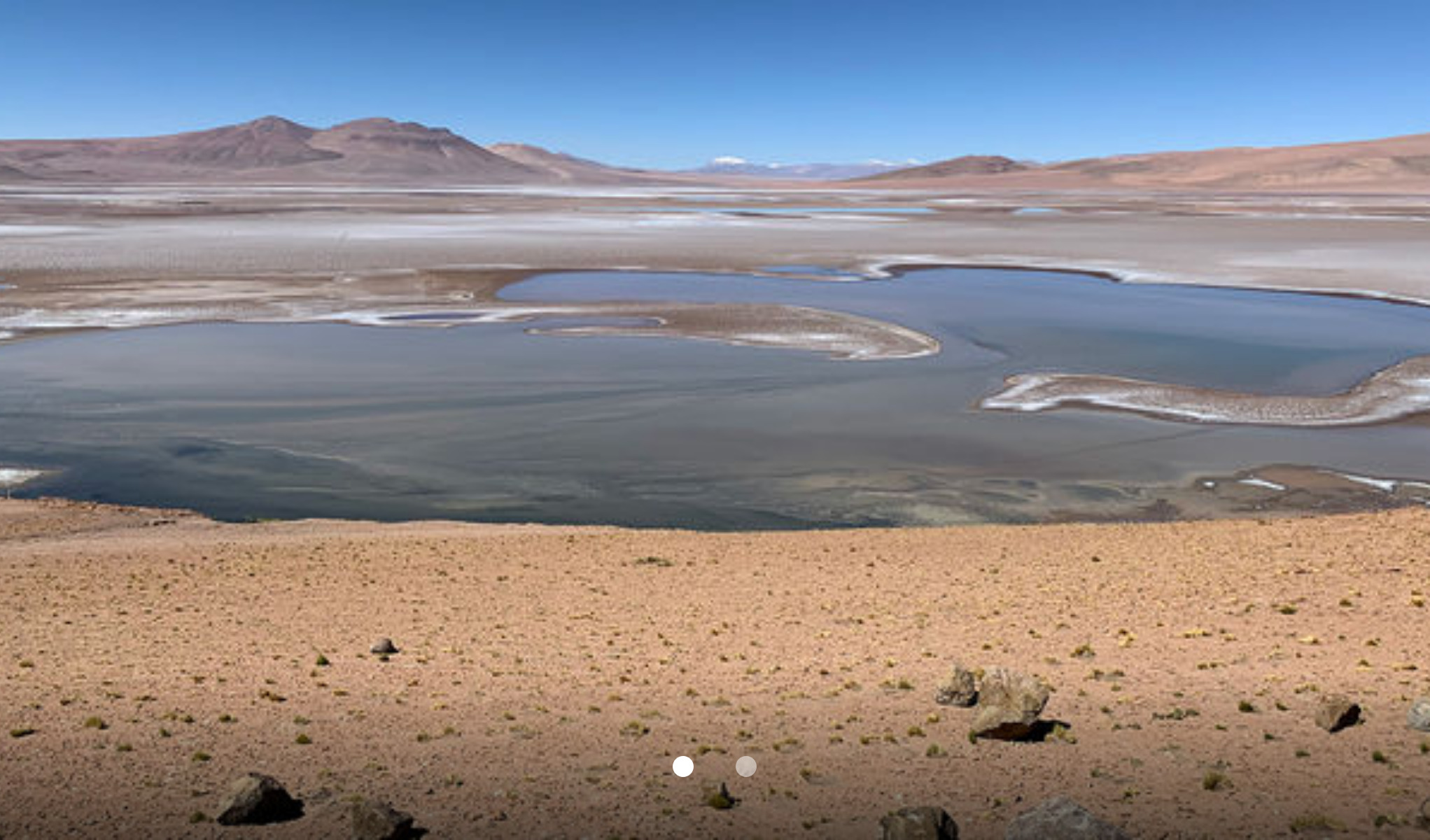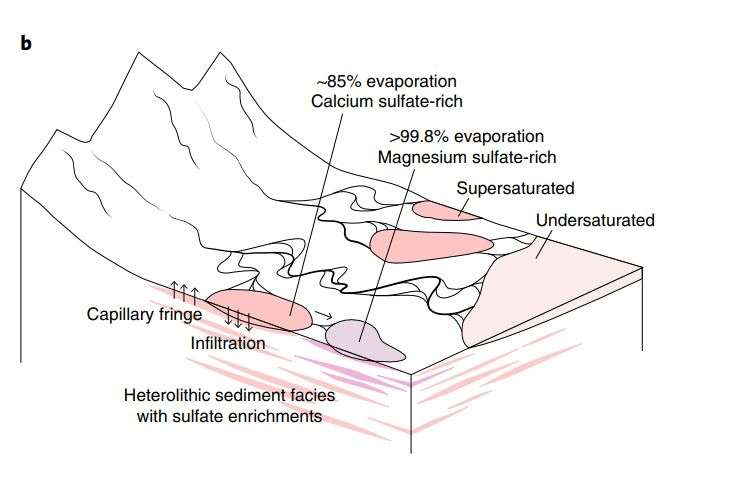It looks like you're using an Ad Blocker.
Please white-list or disable AboveTopSecret.com in your ad-blocking tool.
Thank you.
Some features of ATS will be disabled while you continue to use an ad-blocker.
19
share:
Imagine ponds dotting the floor of Gale Crater, the 100-mile-wide (150-kilometer-wide) ancient basin that Curiosity is exploring. Streams might have laced the crater's walls, running toward its base. Watch history in fast forward, and you'd see these waterways overflow then dry up, a cycle that probably repeated itself numerous times over millions of years.
That is the landscape described by Curiosity scientists in a Nature Geoscience paper published today. The authors interpret rocks enriched in mineral salts discovered by the rover as evidence of shallow briny ponds that went through episodes of overflow and drying. The deposits serve as a watermark created by climate fluctuations as the Martian environment transitioned from a wetter one to the freezing desert it is today.
NASA's Curiosity Rover Finds an Ancient Oasis on Mars
In the midst of the 150 meters (500 feet) of calcium sulfate-enriched strata Curiosity found a 10-meter (33-feet) slope with 26-36 percent magnesium sulfate, but little calcium. Calcium sulfate is less soluble than magnesium sulfate, and the authors think it precipitated out first, with more soluble salts deposited in the final drying stage.
Curiosity Finds Salty Traces Of The Last Lakes Of Mars’ Gale Crater
Glad to see NASA thinks we can cope with the fact that 3.5 billion years ago Mars had lakes on it's surface.
These are not the fresh water ones like NASA found last time, these lakes have more "salts" in them.
The rover will be moving out of the clay-bearing unit and onto a sulfate-bearing unit. The rover is moving out of the lake and onto what used to be dry land at the time of the lake,
I wonder if this is the place they break the "news we are not ready for"
a reply to: Spacespider
And I wonder how many parts the "not-ready-for-prime-time" news has?
Like, maybe:
Mars was once an Earth-like planet... (ok, we knew that)
that had life on it... (oh my, that needs some getting used to!)
that was intelligent and looked remarkably human... (what? WHAT?! Wait... WHAT???!!)
that was somehow nuked with atomic superbombs ... (holy crap, stop... whimper)
and might still have some critters roaming around the desolate rubble ... (what's on TV?)
And I wonder how many parts the "not-ready-for-prime-time" news has?
Like, maybe:
Mars was once an Earth-like planet... (ok, we knew that)
that had life on it... (oh my, that needs some getting used to!)
that was intelligent and looked remarkably human... (what? WHAT?! Wait... WHAT???!!)
that was somehow nuked with atomic superbombs ... (holy crap, stop... whimper)
and might still have some critters roaming around the desolate rubble ... (what's on TV?)
a reply to: LookingAtMars
Can you link me to pic in OP I would take a holiday there, surely they can just claim it was a mirage
Can you link me to pic in OP I would take a holiday there, surely they can just claim it was a mirage
That picture..
Quisquiro salt flat in South America's Altiplano represents the kind of landscape that scientists think may have existed in Gale Crater, which NASA's Curiosity rover is exploring.
Quisquiro salt flat in South America's Altiplano represents the kind of landscape that scientists think may have existed in Gale Crater, which NASA's Curiosity rover is exploring.
a reply to: LookingAtMars
Spotted Lake in British Columbia, Canada - on the lands of the Okanagan tribe is similar in that the lakes are at
bottom of a valley which water drains off surrounding mountains into the basin
Lakes contain high mineral content
en.wikipedia.org...#/media/File:Spotted_Lake.jpg
en.wikipedia.org...
Spotted Lake in British Columbia, Canada - on the lands of the Okanagan tribe is similar in that the lakes are at
bottom of a valley which water drains off surrounding mountains into the basin
Lakes contain high mineral content
en.wikipedia.org...#/media/File:Spotted_Lake.jpg
en.wikipedia.org...
new topics
top topics
-
Federal law trumps state and local law every time
Social Issues and Civil Unrest: 17 hours ago, 17 flags
19


